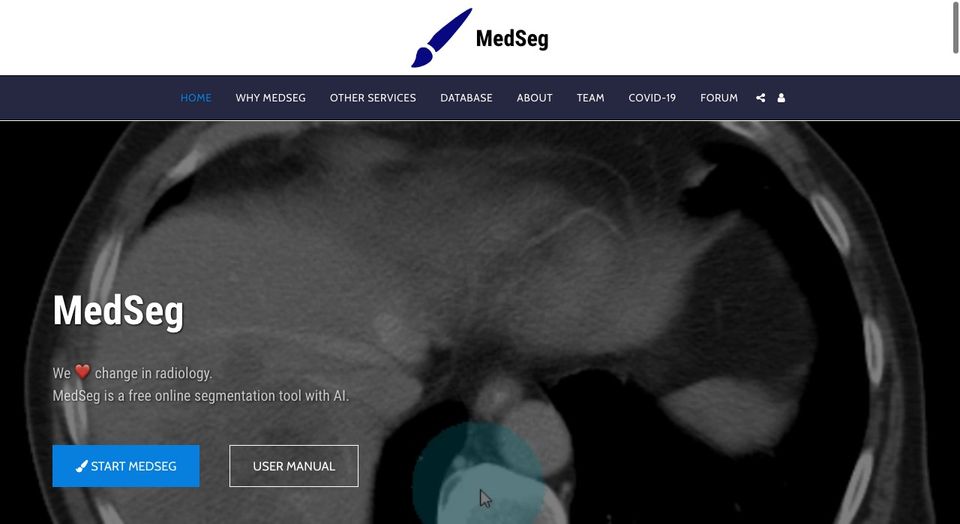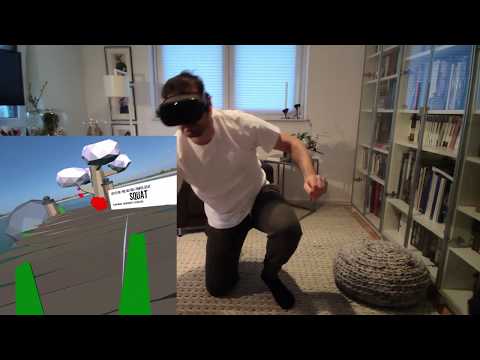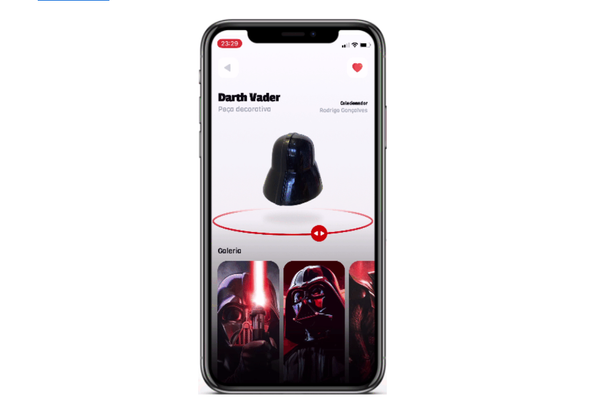MedSeg: AI(Artificial Intelligence)-based Free Online Segmentation Tool for Radiological Images
Table of Content
Looking for a segmentation tool developed by radiologists for radiologists? Look no further than MedSeg.
MedSeg is an online segmentation tool based on JavaScript that allows radiologists to segment radiological images directly in their web browser without the need to download, install or register. Hence the tool is completely browser based, the image viewing and even AI model applications run at your local browser, there are no issues with patient safety, as the image data is not uploaded to an external server.
Many radiologists find commonly used segmentation tools cumbersome, particularly as many tools have a fairly different user interface than what radiologists are used to from their PACS-software. Often the tools are also loaded with extra functionality that are useful for some, but are in general rarely used and tend to clutter up the interface.
Developed by radiologists, MedSeg aims to be a tool that radiologists find intuitive and can start using immediately. The tool is optimized for both manual segmentation and AI-based segmentation, where the latter allows you to use up-to-date AI-models to do the brunt of the segmentation work. After the AI-model has made its prediction, you can quickly correct any errors by manual correction.
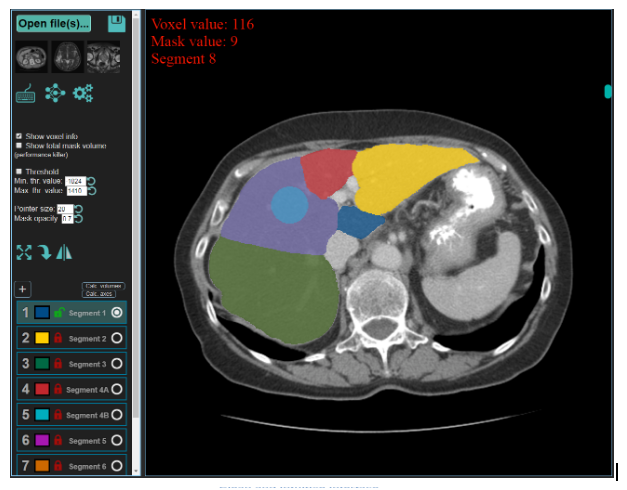
MedSeg Features
- Free and browser based: No installation or registration necessary
- File formats supported: DICOM and NIfTI (mask downloads only supported for NIfTI at this time)
- Simple start: Open up exams by simply dragging files into the browser window
- Gaming-inspired key bindings: Fast and easy controls during the segmentation process with keypad inputs inspired by gaming
- PACS-like controls: Mouse inputs such as zooming, panning and changing windowing/center will be appreciated by practicing radiologists
- Manual segmentation: Brush tool based approach, including easy application of thresholding
- Artificial intelligence (AI) based segmentation: Use AI-models directly in the tool to automatically segment areas of interest
- Semi-automatic AI-based segmentation: Interactive AI models that respond to user’s mouse clicks or by predicting the next slice based on current slice segmentation
- Instant volumetric assessment based on segmentation: Single click to obtain the volume of your segmentation. Useful in both clinical and research practice
- Database: Small but growing open image database with raw images and connected segmentation masks free to download with permissive license
- Segmentation service: Users may also let the MedSeg team perform the needed segmentation (fee-based service)
- Development of AI-models: Users can also let the MedSeg team develop AI-models suitable for the user’s need (fee-based service)
- Research collaboration: The MedSeg team is open to research collaboration.
- Rich Datasets
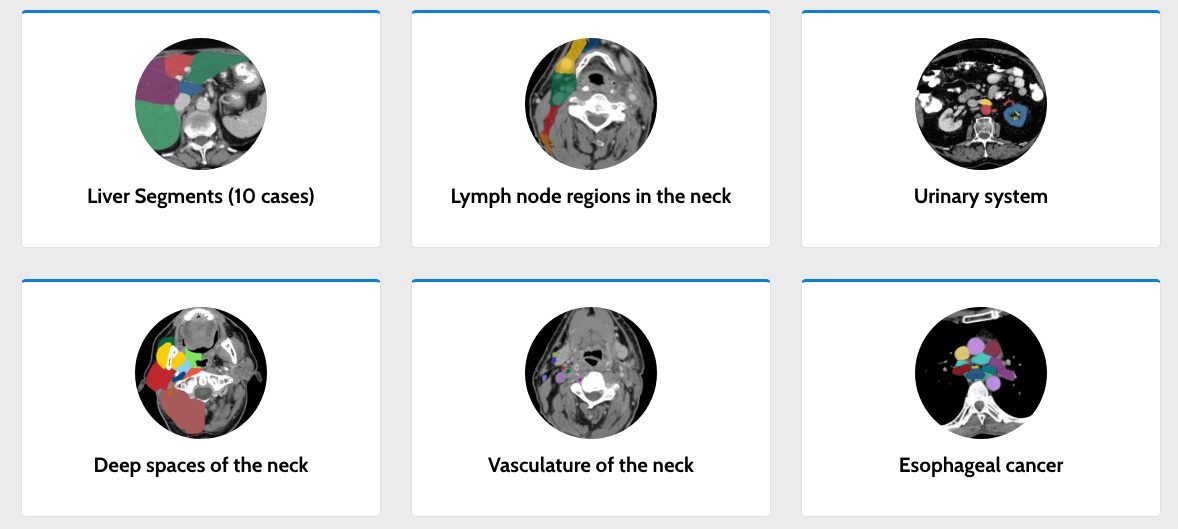
Behind the Scene
The project is built with HTML5/ JavaScript and uses TensorFlow.js for AI. It's deployed currently on Amazon Web Services (AWS). The developers uses several open-source libraries and packages most of them are battle tested in enterprise projects here is a list of them included resources that helped in creating this project, we are really proud in Medevel to see it's listed there:
MedSeg is based on the following openly available tools and resources:
- DICOM reader
- Nifti reader
- Deep learning (DL) in browser
- Development of DL models and Keras.io
- DeepGrow module
- Ideas and experience from a Python-based segmentation tool with AI-capabilities. RILContour
- 3D Slicer: Another great advanced application with many post-processing tools
- Overview of web-based DICOM viewers

Privacy is not threatened
MedSeg is unique in its approach to segmenting radiological images in your web-browser with AI without the need to send potentially sensitive data to external servers.
How to start using MedSeg?
Simply enter its webpage and click “Start MedSeg”, This will open up the segmentation tool where you can click and drag in your image files. Works best on Chrome and with a relatively up-to-date computer. The AI tools work best when run on a computer with a GPU. See also their comprehensive user manual of the front page.
Developers in Practice (Radiologists)
MedSeg is developed by radiologists, who built this project from the ground up. They understand the requirements, challenge, end-users and the practice environment. The developers behind MedSeg are: Dr. Tomas Sakinis who is the Co-founder developer and a radiologist and Dr. Håvard Bjørke Jenssen who is a Co-founder, In charge of business relations and a radiologist.
Future Plan for MedSeg
Add multiplanar reformatting (MPR) and 3D visualization. Enable DICOM to NIfTI conversion.
Conclusion
MedSeg is a free, openly available segmentation tool that requires little training and no prior set-up to start using. You may manually segment your images or take advantage of their developed AI-models to ease the segmentation process of your interest. MedSeg may also contribute in your own segmentation work by developing further AI-models for your need.
Note that: MedSeg is still growing as it's in active development.
If you have any question or notes about MedSeg, feel free to contact them directly through the project's website.

